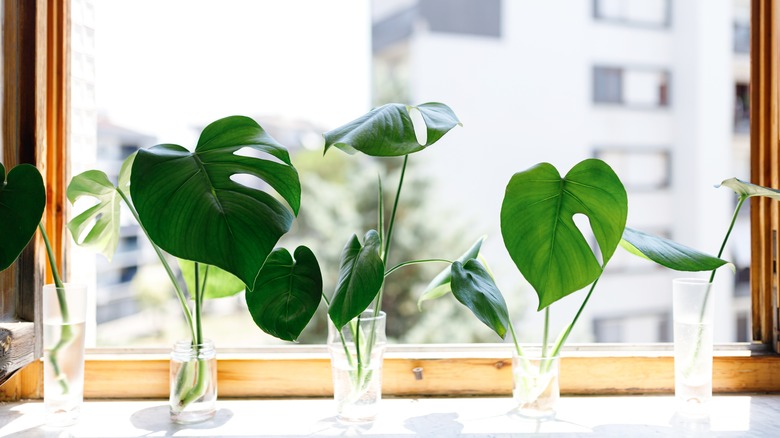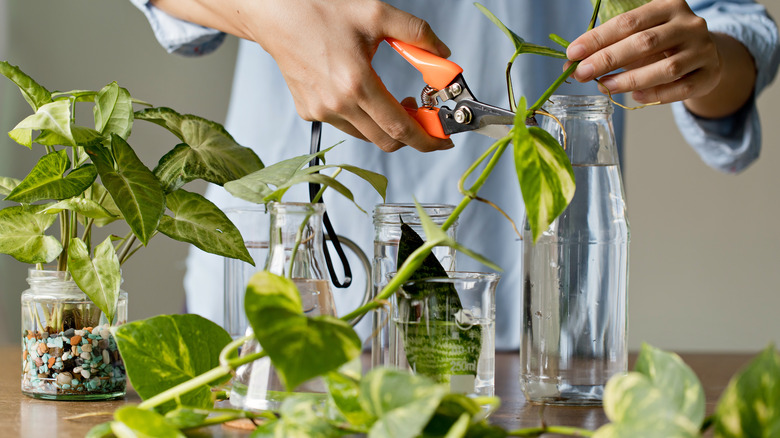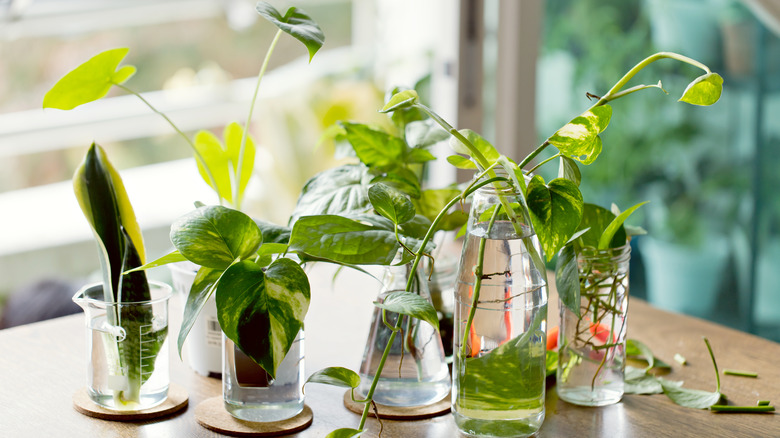Propagate Plants Like A Pro With Expert Hilton Carter's Useful Tips
We may receive a commission on purchases made from links.
Plant propagation is the process of creating new plants from existing ones, and it can be a highly rewarding endeavor for plant enthusiasts. Interior designer and plant expert Hilton Carter explains in his book Wild at Home: "Having plants in your home not only adds life, but changes the airflow throughout. It's also a key design element when styling your place." Watching a tiny cutting develop roots and eventually grow into a mature plant can be incredibly satisfying and it allows individuals to witness the entire life cycle of a plant, from its initial stages to its full potential.
Additionally, plant propagation offers the opportunity to expand one's plant collection without having to spend a significant amount of money. By propagating plants, individuals can create multiple copies of their favorite species or varieties, allowing them to fill their homes or gardens with a diverse range of plants. That being said, proper care is essential for successful plant propagation. Cuttings need the right conditions to develop roots and establish themselves as new plants. This includes providing adequate moisture, light, and temperature levels. If you're interested in expanding your personal plant collection, Hilton Carter has several great tips for successful beginning propagation that will allow you and your friends to enjoy all the potential your plants have to offer.
Hilton Carter's tips for cutting plants
When it comes to the correct way to make a cutting of a mature plant, the type of cut will depend on the plant. In an Instagram post, Hilton Carter says, "Make sure you know exactly where to make the cut on the type of plant you have. It could require a stem, tip, or a leaf cut. Getting that right is key." Aside from researching the individual plant you'd like to propagate and identifying best practices to help the plant root, one of the best ways to identify a good place to make a cutting is near a node on a mature plant. Nodes are the points where leaves, buds, or branches attach to the main stem and are usually identified through a knob-like bulge in the main stem.
Once you've identified a node on a healthy branch, make a cut with clean scissors or gardening shears a few inches above the node. The node is where the new roots will emerge, so having a few nodes on the cutting will ensure that you have a greater chance of successful propagation. Before placing the cutting in water or soil, it's a good idea to remove any leaves or buds that may interfere with the rooting process when the cutting is placed in water or soil. Extra foliage can rot if submerged in water or suffer from soil-borne diseases if in contact with soil.
Hilton Carter's tips for caring for cuttings
In addition to making informed cuttings of your plant, Hilton Carter has a few more important tips to ensure that your new plants have a healthy start. In his Instagram post, he states, "Water propagation has been the easiest and most rewarding for me. Just make sure you're replacing the water when it starts to get low or discolored due to bacteria or algae." While some plants will root directly in soil, water propagation does allow you to see the roots develop when placed in clear glass vessels. This visual is important so that you can identify issues such as root rot, infections, or a failure to root altogether. Additionally, by rooting in water, you reduce the likelihood of pests as many of them favor soil over water.
Another essential tip that Hilton Carter has for plant enthusiasts in his Instagram post is to "Place your cuttings in a spot that gets bright light but not direct sun. Direct sun will heat up the water and kill your root system and cutting." Cuttings are extremely sensitive to direct light but do require bright light in order to photosynthesize, an essential process to rooting. If you'd like to place your cuttings in a spot that does receive direct light, consider diffusing the light with sheer curtains to protect your new cutting. Finally, Carter stresses the need for patience while your cutting roots, as the process does take time.


